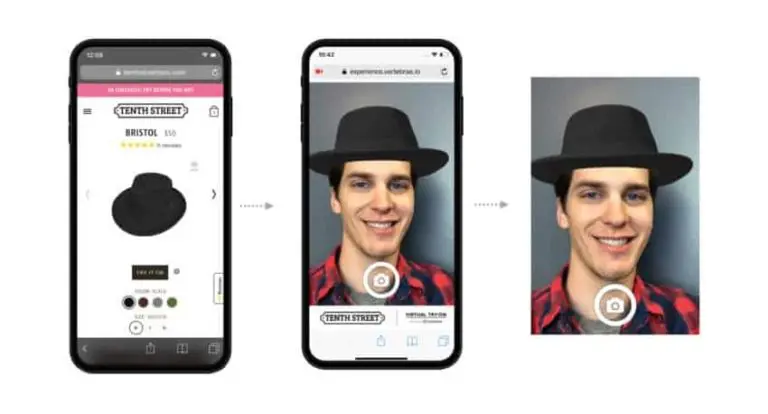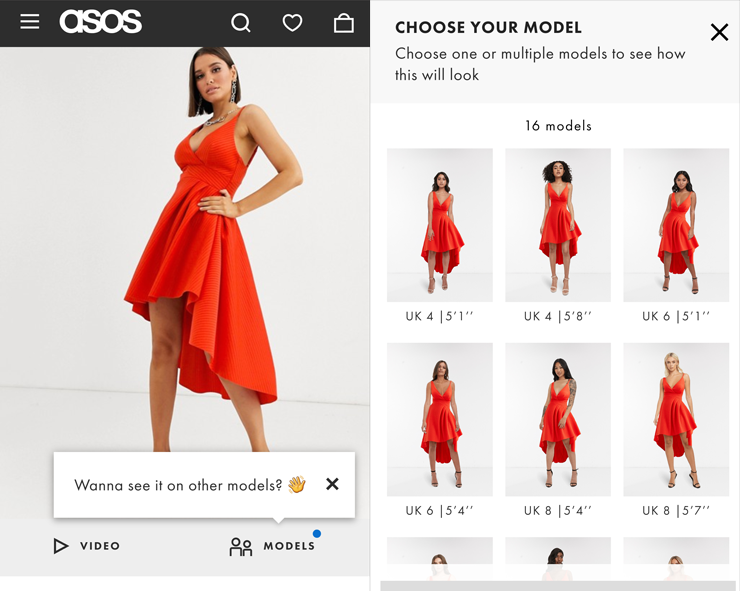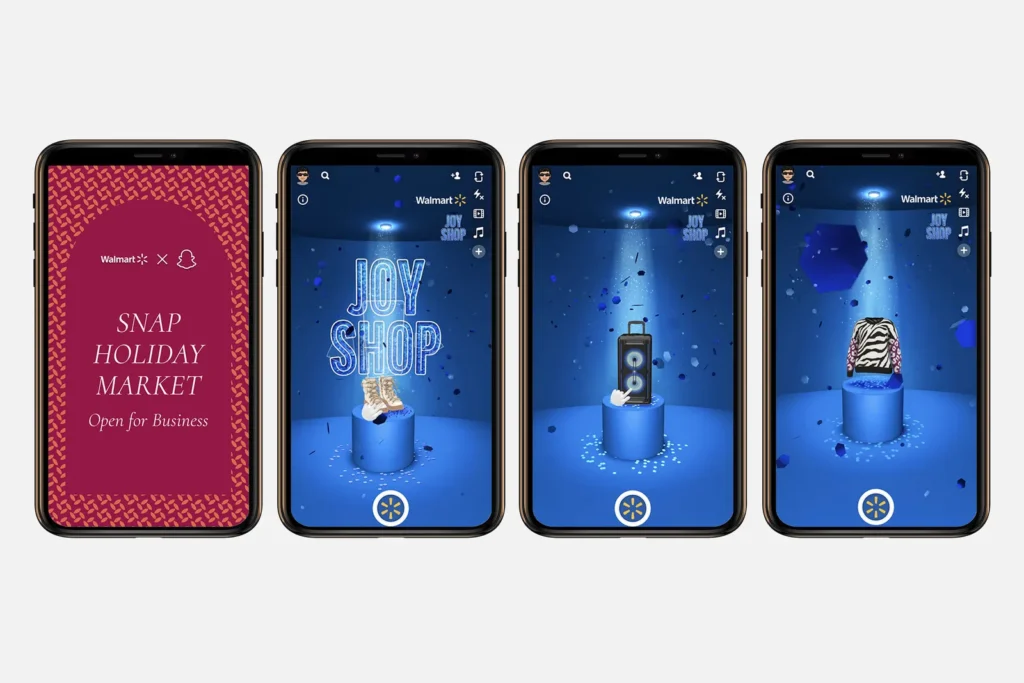Once the pandemic set in and customers couldn’t set foot into bricks and mortar stores, fashion retail companies had to look for a better alternative to reach people. Naturally, e-commerce was sought after and everyone had their websites revamped to make them appealing and one with a good user interface. Many brands went a step further and explored the experiential aspect of e-commerce so that customers didn’t miss the feel of real-life shopping experiences. The ongoing conversations on the metaverse will only accelerate this adoption of experiential e-commerce. Let’s find out the reasons why this will work and be beneficial to brands and customers alike.
- Increases conversion rate:
According to a survey by Google, 90% of shoppers today would consider making a purchase if the shopping was enabled by AR. This is because, typically, e-commerce platforms only provide options to view and buy products. In experiential e-commerce, customers get the option to virtually try the products, get a 360 degree view of the product in 3D, and thoroughly understand what they are planning to buy. Since the customer knows what they are buying, the conversion rate increases and the return rate decreases. This is a relief for e-commerce platforms as 30-40% of the products are returned after people find out the outfits delivered were not as desired. Some platforms have virtual models on which the dresses will be presented, some ask for customer photographs to superimpose the outfit on them. The virtual mirrors enable customers to see how the outfit will look on them either through touch-based or gesture-based interfaces.
According to Obsess, “These photorealistic, immersive online shops have been demonstrated to drive discovery, engagement, clickthrough, session duration, average order value and conversion for leading retailers.”
A few brands who have explored this and found significant results are:
- Rebecca Minkoff found that 65% of their website visitors were keen on purchasing a product, thanks to the 3D modelling and AR-based tools on their product pages.
- Zovi, an e-commerce platform, has developed virtual trial rooms for customers to try on clothes virtually.
- Tenth Street Hats launched an AR-based solution where users could try on the hats virtually without the need to download their app. This increased their conversion rate by 52% and revenue per user by 41.8%.

- ASOS, a British e-commerce website launched ‘See My Fit’ in 2020 to help customers visualise dresses on different models according to their size.

- Brands like Tommy Hilfiger, Versace, Ferragamo, Sephora, Maybelline among many others offered their customers the option to virtually try on their products and get recommendations.
- Neatsy AI is enabling iPhone users to use their FaceID selfie camera to try on sneakers virtually.
- Gucci launched a gaming module in its mobile application which allowed people to try on virtual sneakers in real time.
- Snapchat in partnership with Farfetch enables users to add jackets from Off White to their videos.
- Increases customer engagement:
Today’s customer is not looking at just click and buy options. They don’t want to be sold to, instead they want to have a good experience. If your brand takes care of it, shopping will follow. In experiential e-commerce, since the limitations of physical stores don’t exist, you can create a unique immersive shopping experience for them. Even if they don’t buy at the moment, there’s a higher chance of customers coming back to your platform. The better you make your interactive experiences, the longer they would want to stay. As customer engagement increases on your platform, you’ll get a better idea of customer preferences.
As Olga Dogadkina, Emperia’s co-founder and CEO said, “Virtual experiences have the advantage of being able to granularly track users’ activity, from tastes, to movement around the space, to demographics appeal and checkout process.”
Here’s how few brands improved the virtual shopping experience:
- Burberry and Harrod’s, actually made their customers feel like they were on cloud nine! They not only created a virtual Greek temple, but made one in the clouds!
- To make it a real-life shopping experience, Charlotte Tilbury enables its customers to invite their friends via online video call to accompany them in their virtual shopping visits.

- Ferragamo’s House of Gifts shows you the rooms of the Italian video where their holiday campaign was filmed. In the tour there are a lot of options to interact, buy products, and watch videos.
- Ralph Lauren users can now click selfies in their virtual world on Zepeto.
- Improves brand presence across all sales channels:
You might not be planning to shut down your physical stores. But if you create memorable experiences in both worlds, it will help customers to trust you better. On our virtual marketplace which is about to launch soon, you can have kiosks customised according to your brand. Here’s how we created one for Erika Wang, a digital fashion designer. Companies should look at technology not as a one time solution during the pandemic, but leverage it to increase their productivity and revenue and try to make both work hand in hand. Being consistent across all sales channels will help you build long- lasting relationships with your customers.
If you do not wish to be a part of the end-to-end process and start everything from scratch, there are many virtual marketplaces like ours where you can host your brand and avail the benefits of experiential retail. This also helps customers as they can see many products at once.
Here are a few examples:
- Many reputed brands like Ralph Lauren, Burberry, Diesel, Koché have opened their individual virtual stores and soon Snapchat is going to open them for ‘Snap Holiday Market’. This will include virtual immersive experiences for Amazon Prime Video, Walmart and more brands.

- Obsess has created virtual stores for 100+ brands like Tilbury, Ferragamo, Ralph Lauren etc.
- Dior used Obsess to create its Paris-based Maison Christian Dior store virtually.

Key Takeaways:
- In experiential e-commerce, customers get a chance to understand what they are actually buying. This is enabled through virtual trial rooms, AR-enabled solutions, etc.
- Even if customers don’t buy something at the moment, it is important to focus on the interactive and unique shopping experience your platform provides. This will increase the customer engagement on your platform and also attract them for future purchases.
- Companies can also make use of experiential e-commerce to recreate virtual versions of their physical stores.
- For retail brands who do not wish to start from the scratch, virtual marketplaces are a good place to increase visibility and avail the benefits of experiential retail on the platform.
- Companies should look at experiential e-commerce as a way to leverage the best of both worlds and make room for a phygital experience.
- Today’s customer doesn’t want to be sold to. They want to experience something innovative and interactive, which makes experiential e-commerce an excellent choice.
It’s clear that experiential e-commerce is all about customer-centric relationships and experiences. With more simpler and seamless integrations on all types of devices, the demand for such innovative and immersive experiences will keep increasing. In fact, a research by Snap and Oxford Economics states that Gen Z will be the driving factor for this kind of e-commerce as they are more familiar with such advanced technology.
To be at the forefront of such exciting and profitable change for your business, get in touch and we’ll help you kickstart your digital journey.


